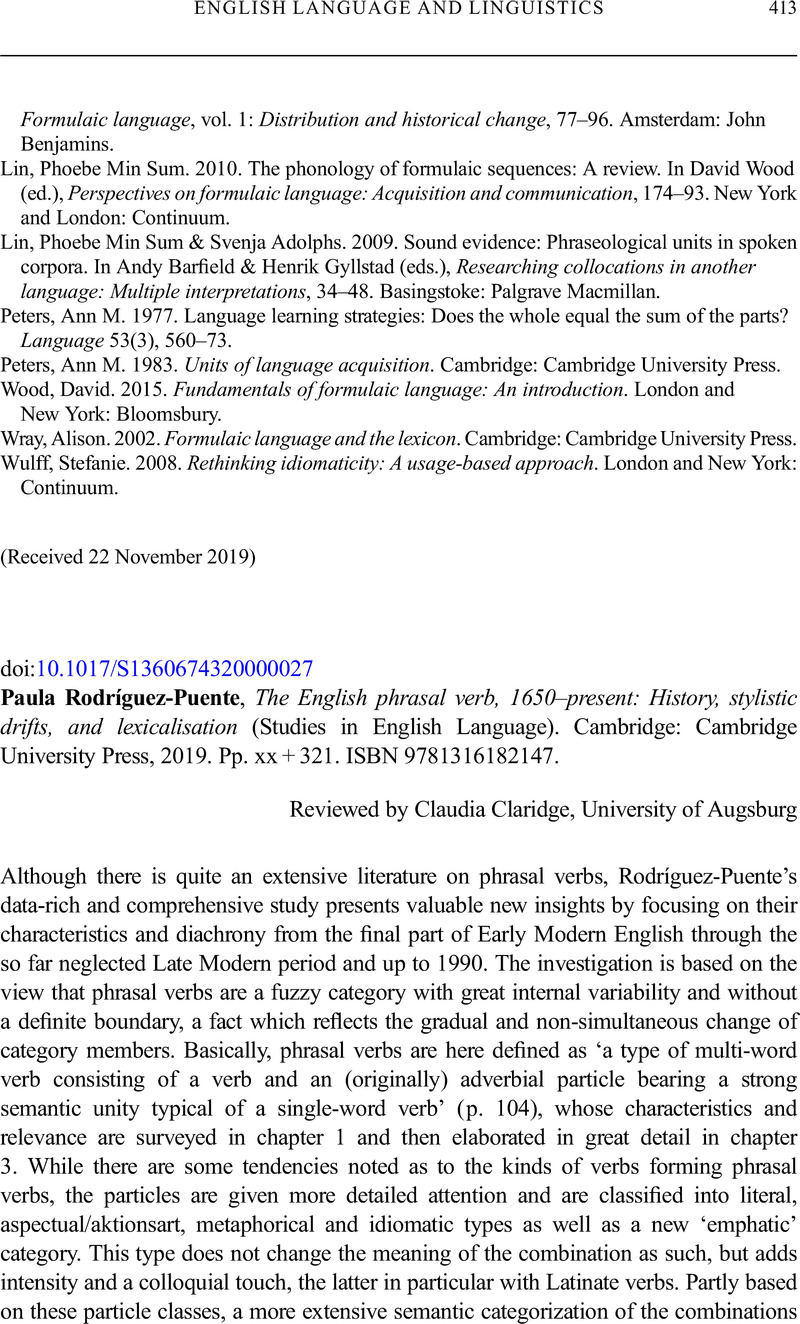No CrossRef data available.
Article contents
Paula Rodríguez-Puente, The English phrasal verb, 1650–present: History, stylistic drifts, and lexicalisation (Studies in English Language). Cambridge: Cambridge University Press, 2019. Pp. xx + 321. ISBN 9781316182147.
Published online by Cambridge University Press: 11 March 2020
Abstract
An abstract is not available for this content so a preview has been provided. Please use the Get access link above for information on how to access this content.

- Type
- Book Review
- Information
- Copyright
- Copyright © Cambridge University Press 2020
References
Brinton, Laurel J. & Traugott, Elizabeth Closs. 2005. Lexicalization and language change. Cambridge: Cambridge University Press.CrossRefGoogle Scholar
Claridge, Claudia. 2000. Multi-word verbs in Early Modern English: A corpus-based study. Amsterdam: Rodopi.CrossRefGoogle Scholar
Palmer, Chris. 2015. Measuring productivity diachronically: Nominal suffixes in English letters, 1400–1600. English Language and Linguistics 19(2), 107–29.CrossRefGoogle Scholar
Thim, Stefan. 2006. Phrasal verbs in everyday English: 1500–1700. In Johnston, Andrew James, Mengden, Ferdinand von & Thim, Stefan (eds.), Language and text: Current perspectives on English and Germanic historical linguistics and philology, 291–306. Heidelberg: Winter.Google Scholar
Thim, Stefan. 2012. Phrasal verbs: The English verb-particle construction and its history. Berlin: De Gruyter Mouton.CrossRefGoogle Scholar





